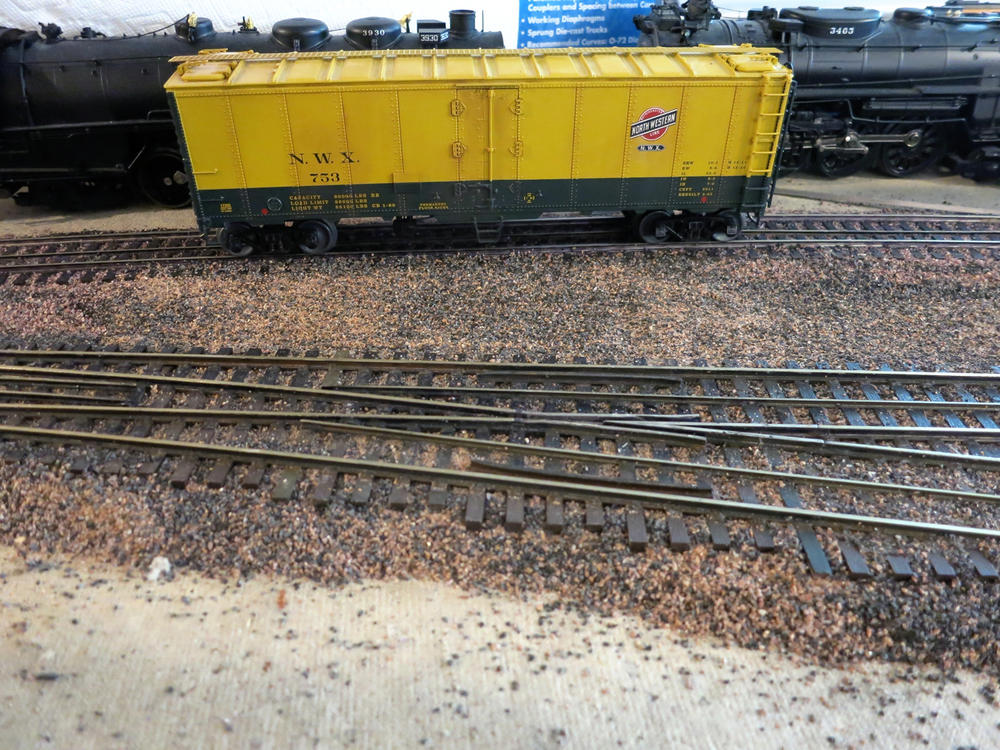I'm wanting to change most of the layout from Scaletrax to Atlas 2 rail converted to 3 rail. The middle rail is N scale rail.
The first agenda is to see if I can produce an ultra smooth electrically correct 3 rail switch using Atlas 2 rail 7.5 turnouts.
This is the beginning of the series.
First thing is I had to move the guard rails a little less than 1/8th inch so modern 3 rail wheels will fit through. Then I had to file down the top of the frog so there would be no jiggle regardless if the car had 3 rail wheels or two rail wheels. In this first photo one can see the original mounting holes
This photo shows the movement of the guard rails. The guard rail at the bottom has the new spacing. The movie shows how smooth the new set up works with 3 rail cars.





 Ron - One suggestion. In the book Detailing Track, Masterclass Modeling Series™ No. 2, by Mike Cougill, Joe Giannovario wrote about what was wrong with Atlas turnouts from a modeling standpoint. The problem is that the frog and guard rails are way too long to look prototypical. I modified them using some guidance in the article. They do not need to be as long as they are and are easily shortened. I didn't go as far as Joe because I was converting the turnouts to 3 rail, but they look much better than a stock Atlas turnout. You can count the ties to see the difference between mine and the ones on which you are working.
Ron - One suggestion. In the book Detailing Track, Masterclass Modeling Series™ No. 2, by Mike Cougill, Joe Giannovario wrote about what was wrong with Atlas turnouts from a modeling standpoint. The problem is that the frog and guard rails are way too long to look prototypical. I modified them using some guidance in the article. They do not need to be as long as they are and are easily shortened. I didn't go as far as Joe because I was converting the turnouts to 3 rail, but they look much better than a stock Atlas turnout. You can count the ties to see the difference between mine and the ones on which you are working. 






